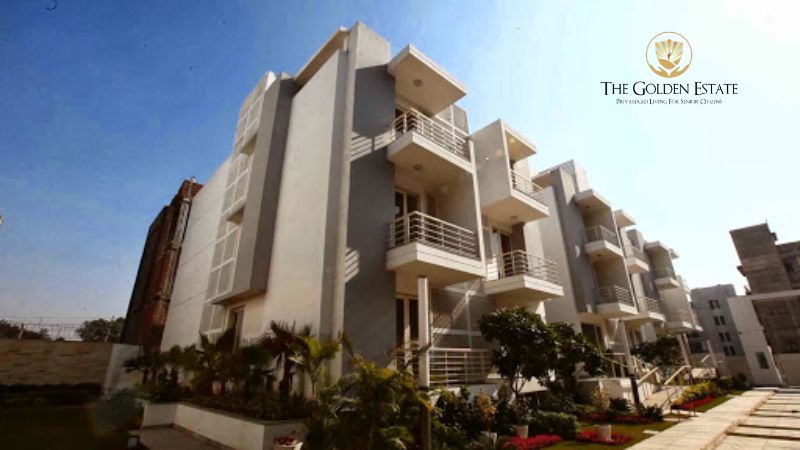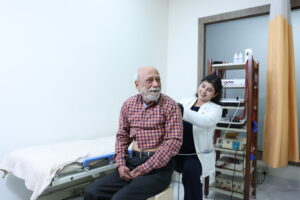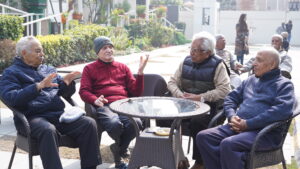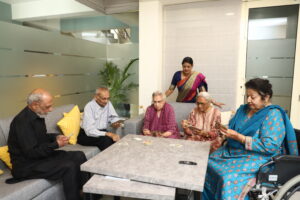Selecting a senior community is a big decision that must be well thought through to provide senior citizens with a safe, enjoyable, and comfortable environment. Delhi has many senior living possibilities with its lively culture and contemporary conveniences. But there are so many options that can be deluging. This article offers thorough guidance on choosing the best Senior Living Community in Delhi that will satisfy its residents’ particular requirements and tastes.
Understanding the Types of Senior Living Communities
Before getting into particular advice, it’s important to know the many kinds of senior living communities that are out there:
- Independent Living Communities:
Seniors who are self-sufficient and like an active lifestyle are served by independent living communities. Among the facilities they provide are food options, social gatherings, and recreational activities.
- Assisted Living Communities:
Assisted living communities are made for senior citizens who need help with everyday tasks like dressing, taking their medications, and bathing. They offer a cross between support and independence.
- Nursing Homes:
Provide senior citizens with serious medical issues with all-encompassing medical care and assistance. Their group of medical specialists is on call around the clock.
- Memory Care Units:
Memory Care Units are safe settings with specialized care for seniors with Alzheimer’s, dementia, or other memory-related disorders.
- Continuing Care Retirement Communities (CCRCs):
Within the same community, continuing care retirement communities (CCRCs) provide a continuum of care from independent living to assisted living and skilled nursing care. As needs change, this gives seniors stability and peace of mind, enabling them to move between care levels.
- Respite Care Facilities:
Short-term respite care facilities offer main caregivers a little break. Seniors recovering from surgery or sickness or when their normal caregiver is unavailable may find respite care helpful.
- Palliative and Hospice Care:
Hospice and palliative care are centers that comfort and assist elderly people who are near death. These institutions emphasize enhancing the patient’s and their family’s quality of life, pain management, and emotional support.
Factors to Consider When Choosing a Senior Living Community
- Location and Accessibility
Proximity to Family and Friends: A community that is conveniently close to family and friends will allow for frequent visits and emotional support.
Accessibility to Healthcare Facilities: Make sure the neighborhood is near respectable clinics and hospitals for routine health examinations and emergencies.
Transportation Services: Check if the neighborhood promotes independence and convenience by providing transportation for shopping, medical appointments, and other trips.
- Cost and Financial Considerations
Affordability: Establish a spending plan and look for a community that provides high-quality services within your resources. Consider future affordability and the possibility of price rises.
Payment Options: Find out the type of payment—monthly rental, one-time deposit, or a combination of both. A few localities might provide insurance coverage or financial support.
Inclusions and Exclusions: To avoid unanticipated costs, find out what is covered by the fees, including meals, utilities, housekeeping, and medical care.
- Quality of Care and Staff
Staff Qualifications and Ratios: Look up the credentials of the medical and caregiving staff members. A lower ratio of workers to residents frequently translates into more individualized care.
Staff Training and Turnover: Ask about average staff turnover rates and staff training programs. Well-trained, consistent staff members support stable conditions and improved care.
Resident Feedback: Interview present residents and their families to obtain direct input on the caliber of treatment and the responsiveness of the personnel.
- Amenities and Activities
Recreational Facilities: Look for features that encourage an energetic and interesting lifestyle, such as libraries, gardens, fitness centers, and swimming pools.
Social and Cultural Activities: A variety of pursuits, such as yoga, music, arts and crafts, and cultural events, support mental and social health.
Dining Selections: Check the kind and calibre of food provided. Communities with dietitians or nutritionists on staff can meet special dietary needs.
- Safety and Security
Emergency Response Systems: Ensure the neighborhood has reliable call buttons, alarm systems, and qualified staff on hand to help immediately.
Security Measures: To guarantee the inhabitants’ safety, assess the security measures, including CCTV monitoring, safe entrances, and on-site security guards.
Health and Safety Procedures: Check that the community has sufficient procedures in place, especially in light of recent health emergencies like COVID-19.
- Personalized Care Plans
Individualized Care Plans: Choose communities that offer customized care plans tailored to each individual’s particular requirements, tastes, and medical issues.
Regular Assessments: Updates to care plans and routine health assessments are essential for adjusting to the residents’ evolving needs.
- Legal and Accreditation Considerations
Licensing and Accreditation: Check to see if the community is accredited by reputable bodies and licensed by the appropriate authorities to guarantee adherence to quality standards.
Resident Rights: Learn about citizens’ rights to privacy, respect, and dispute resolution procedures.
Contract Review: Read the contract thoroughly, including the terms and conditions, deposit and refund policies, and any termination or care level modification clauses.
Conducting Site Visits
It is imperative to make site visits to assess the communities in person after you have a short list:
Look Around: Note the community’s general atmosphere, upkeep, and cleanliness. Clean surroundings reflect the standard of treatment.
Deal with Residents and Staff: Talk to employees and locals to find out how satisfied they are with the neighborhood and its culture. Amicable and approachable personnel indicate excellent management.
Participate in the Activities: Attend or watch a few of the dinners and events to experience the social climate and everyday life of the neighborhood.
Check the Apartments: Look at the living areas’ comfort, safety features, and fit for your needs. Important elements are accessibility, natural sunlight, and enough room.
Leveraging Online Resources and Reviews
Online Reviews: Use internet forums and review websites to read about other individuals’ experiences and ratings of various communities.
Virtual Tours: Several communities offer virtual tours on their websites, which give visitors a first look at the amenities and services.
Talk to Experts: Ask senior living experts or advisors for guidance; they can offer suggestions and insights tailored to your needs.
Conclusion
Locating, paying for amenities, safety, legal issues, and quality of care are just a few considerations for selecting the best senior living community in Delhi. Researching, touring possible areas, and getting input from present inhabitants and their families will all help guarantee an educated choice. Finding a community that provides a secure, nurturing, and stimulating atmosphere ultimately aims to help seniors live happy, dignified golden years.





